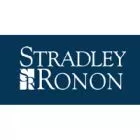Last year, plaintiffs filed an unprecedented 412 new federal class-action securities cases, meaning that the "likelihood of securities litigation against U.S. exchange-listed companies was greater in 2017 than in any previous year."1 In the first quarter of 2017, more cases alleging violations of the Exchange Act's Section 10(b)/Rule 10b-5 were filed than in any quarter since the aftermath of the dotcom boom.2 At the same time, the number of dismissals spiked and the value of settlements dropped precipitously.3 The surge in U.S. securities class actions has been accompanied by a substantial uptick in securities fraud litigation overseas, with investor recovery actions being filed in various jurisdictions around the globe.
For mutual funds and ETFs, the corollary to this proliferation of securities litigation is an increasing volume of solicitations by plaintiffs' attorneys and litigation funders to opt out of the class actions and file direct suits. 4 Many of these class-action cases are of questionable merit and likely not worthy of direct participation by funds. Further, the sheer influx of solicitations threatens to obscure the handful of cases that may align with funds' priorities and warrant serious consideration. Recent successes have demonstrated that in the right circumstances, a direct suit by a fund can yield significant value to the fund and its shareholders. Further, where the corporate wrongdoer's securities trade primarily on non-U.S. exchanges, jurisdictional hurdles may preclude the development of a U.S. class action, meaning there could be no class available for passive participation. In these cases, direct participation in litigation in a foreign jurisdiction may be the only path for a mutual fund or ETF to pursue a meaningful recovery for fraud related losses.
The industry has begun to adapt to this new set of circumstances.5 The Petrobras case marked a "paradigm shift" in this area, leading Petrobras to be called "the watershed case for opt-out plaintiffs."6 A marked number of institutional funds filed "opt-out" complaints after Petrobras issued disclosures related to a decade-long bid-rigging scandal, which led the company to restate its audited financials to address $2.5 billion in capitalized bribes and impairment charges of more than $17 billion. While funds had sporadically opted out of a handful of securities class actions (e.g., Tyco, Enron, Satyam, ARCP), never before had such a significant group of large fund complexes filed separate suits against a single issuer.
Affiliated funds advised by Vanguard, PIMCO, Dimensional Fund Advisors, Dodge & Cox, Janus, Lord Abbett, Russell, John Hancock, Aberdeen, Macquarie, Mass Mutual, Hartford, Allianz, Legg Mason and Western Asset Management, among others, all filed direct, opt-out lawsuits against Petrobras.7 U.S. District Judge Jed Rakoff, who presided over the consolidated class and individual actions, described the class case as "arguably secondary" to the institutional opt-out actions, giving substantial weight to the direct action participants.8 Many of these mutual funds settled their cases in late 2016 and early 2017 (many months before the class action settlement was announced) and recovered hundreds of millions of dollars in direct settlement payments (years before the settlement administration process for the class will even begin). These funds were able to reinvest the settlement proceeds during a period of significant market growth.
In comparison to mutual funds and ETFs, plaintiffs' class-action firms and litigation funders often have different criteria and filters for selecting and pursuing class-action cases against public companies. Thus, when investigating an opt-out or overseas litigation opportunity, funds are likely to require additional information beyond the typical solicitation package to determine whether the opportunity is consistent with the funds' values and meets the funds' standard for participating in litigation. This leads to a new series of questions that advisers and fund boards are increasingly asking.
The Scope and Nature of the Fraud Evaluating the merit of a fraud case begins with assessing the nature and scope of the fraud. Not all "frauds" are created equal. Lukewarm allegations that a company had weak internal controls, without more, are unlikely to carry the day in the court. But compelling evidence of sustained corporate misconduct that caused a company to lose billions of dollars in market capitalization sets the table for a case that has a much higher likelihood of succeeding.
A strong claim under Exchange Act's Section 10(b)/Rule 10b-5 often begins with a set of admittedly false statements or omissions and ample public coverage of the issuer's conduct suggesting scienter (defined as an intent to deceive, manipulate or defraud), accompanied by a significant drop in the stock price.9 These types of fraud cases sometimes result in parallel criminal proceedings and/or regulatory actions against the company, its executives and others. Examples include Tyco, Enron, Satyam and Petrobras, where the companies ultimately revealed that their audited financial statements contained false, material statements due to previously concealed, longstanding misconduct by company executives, resulting in billions of dollars in market capitalization losses. All of these cases saw significant opt-out activity.
While the contours of foreign securities fraud laws may differ from U.S. law, the same hallmarks inform an initial case assessment. Recent foreign cases garnering significant attention from mutual funds include the emissions scandal at Volkswagen in Germany and the accounting scandals at Tesco in the U.K. and Toshiba in Japan. Similar to the U.S. actions mentioned above, U.S. fund complexes are plaintiffs in all of these foreign actions as well.
The Magnitude of the Funds' Losses The potential to enhance a fund's recovery over what is likely to be obtained in a class settlement is one of the key reasons to consider filing a direct action. Despite the filing of hundreds of class actions and record-high settlements in the billions of dollars, class members typically recover only pennies on the dollar. The median ratio of class settlements to total investor losses has remained below 3% for the past decade, and 2017 was no different.10 Anecdotal evidence shows that opt-out plaintiffs often recover a multiple of what they would have recovered had they remained in the class. 11 Nonetheless, given a fund's overall cost-benefit considerations for direct actions, generally it will not make sense for a fund to opt out if the fund did not sustain substantial losses. Some funds make opt-out decisions by establishing participation threshold guidelines, while others analyze potential opt-outs on a case-by-case basis. Regardless, estimating the size of potential damages is a necessary initial step. Law firms and funders soliciting funds to file individual actions are generally equipped to analyze the funds' trading data for the relevant securities and offer an initial estimate of the damages tied to the issuer's corrective disclosures (i.e., the dates that the issuer made public statements that corrected the alleged fraudulent conduct, causing the stock price to drop). Relatedly, the issuer's likely ability to fund a settlement or pay a judgment is also a critical piece of the analysis.
Weighing the Intangibles Based on historical experience, it is not uncommon for funds to view direct litigation as a value detractor, a distraction from their business. But in the case of a significant fraud, where the funds' advisers were deceived into buying securities at inflated prices because of undiscoverable malfeasance by the issuer, advisers and fund boards may view direct litigation as bringing value to the funds' investors by "righting the wrong" and pursuing recovery of losses directly associated with the inflated purchases. Stated differently, if a fund would have otherwise not purchased the securities or paid less for the securities if the adviser had known the truth, pursuing recovery through litigation may be a reasonable tool for the fund to rectify unforeseeable losses caused by fraud.
Funds also may be able to advance different claims than the class to vindicate their investment efforts. For example, if the funds' advisers relied directly on the issuing company's yearly or quarterly SEC filings in purchasing the securities, and those filings contained material misstatements or omissions, claims can be made under Section 18 of the Exchange Act that, unlike traditional securities fraud claims, do not require proof of knowledge or fraudulent intent.
What Are the Costs and Risks of Direct Litigation? Selecting attorneys, negotiating a fee and/or funding arrangement, and anticipating the scope of likely discovery raise additional questions for funds' consideration, including:
- Will attorneys' fees be paid hourly or on a contingent basis? How are they calculated? What are they inclusive of, and how do the fees compare to the market and to the funds' other litigation fees?
- Is the litigation fully funded? How reliable is the funding source?
- Is cost shifting available in the jurisdiction? If so, are the funds protected against adverse costs? Is after-the-event insurance advisable, available and obtainable?
- Would the funds engage the proposed law firm outside of the context of an opt-out litigation?
- Is the proposed law firm equipped to spot and handle fund-specific issues and '40 Act issues that may arise in the representation?
- Is the proposed law firm adept at counselling fund boards on the relevant issues, if necessary?
- Who is lead class counsel, and how is the relationship between class counsel and the proposed direct action law firm(s)?
- What is the scope and opportunity cost of likely discovery, including depositions, and to what degree will it be more intrusive than what the funds are likely to experience even if they don't opt out?
Timing Considerations Funds should be mindful of the timetable by which they must file their opt-out complaint to cover the full period of actionable purchases. This timing is informed by the applicable securities claim statute of limitations (last date by which a lawsuit must be filed and still be timely) and statute of repose (the cut-off period for the earliest actionable purchase of a security). For example, a Section 10(b) claim's statute of limitation period is two years after the discovery of facts constituting the violation, and the statute of repose period is five years after the violation itself. Under Supreme Court doctrine, the statute of limitation period is tolled by the filing of a class-action complaint for the benefit of all putative class members who may later choose to opt out. The statute of repose, however, is not tolled by the filing of a class action. This means that a fund cannot wait for an indefinite period of time to consider its options. Rather, the fund must consider whether and when its claims may be subject to the applicable statute of repose and plan accordingly.
This is not to say that mutual funds should file opt-out complaints with the same haste as first-filer class complaints, which often are filed almost immediately after news of a fraud breaks. Where timing considerations permit, funds often are best served by waiting for the first round of class dismissal briefing to see how the court views the strength of the class case before committing to litigate directly.
Footnotes
1 Cornerstone Research, "Securities Class Action Filings – 2017 Year in Review," at 10, available at https://www.cornerstone.com/Publications/ Reports/Securities-Class-Action-Filings-2017-YIR (last visited Jan. 31, 2018).
2 "Recent Trends in Securities Class Action Litigation: 2017 Full-Year Review," NERA Economic Consulting, Jan. 29, 2018, available at http:// www.nera.com/content/dam/nera/publications/2018/PUB_Year_End_Trends_Report_0118_final.pdf (last visited Feb. 6, 2018).
3 Id.
4 In this context, the terms "opt-out", "direct" and "individual" are used interchangeably to describe an investor lawsuit filed separately from a securities class action.
5 "Institutional investors are increasingly bringing their own lawsuits when they believe a company's disclosures were false and harmful." Vollmer, Andrew N., "A Chance to Rein in Securities Class Actions," The Wall Street Journal (March 3, 2014).
6 Wilcox Volz, Beagan, "More fund managers sue scandal-hit Petrobras," Financial Times (Oct. 25, 2015), available at https://www.ft.com/ content/f50dacce-78bd-11e5-a95a-27d368e1ddf7 (last visited Jan. 31, 2018).
7 See, e.g., Wilcox Volz, Beagan, "Lord Abbett, Russell Funds Join Line of Petrobras Plaintiffs," Ignites (Sept. 30, 2015).
8 "Direct, opt-out actions against Petrobras represent paradigm shift, FRT tells Ignites," Financial Recovery Technologies, (July 8, 2016), available at http://frtservices.com/direct-opt-out-actionsagainst- petrobras-represent-paradigm-shift-frt-tells-ignites/ (last visited Feb. 5, 2018).
9 The elements required to prove a claim under Section 10(b) of the Securities Exchange Act of 1934 (Exchange Act) are (1) a material misrepresentation or omission; (2) scienter; (3) a connection with the purchase or sale of a security; (4) reliance; (5) economic loss; and (6) loss causation. Dura Pharmaceuticals, Inc. v. Broudo, 544 U.S. 336, 341-42 (2005).
10 "Recent Trends in Securities Class Action Litigation: 2017 Full-Year Review," at 38, NERA Economic Consulting, Jan. 29, 2018, available at http://www.nera.com/content/dam/nera/publications/2018/PUB_Year_End_Trends_Report_0118_final.pdf (last visited Feb. 6, 2018).
11 Dutill, Keith R. and Joseph T. Kelleher, "Fraud Recovery for Mutual Funds: A Brave New World?" Fund Directions, Vol. XXIII, No. 3 (March 2014). In contrast to class action settlements, which are publicly filed, the details of settlements between issuers and opt-out plaintiffs ordinarily remain confidential and are thus not readily available for public analysis.
The content of this article is intended to provide a general guide to the subject matter. Specialist advice should be sought about your specific circumstances.


